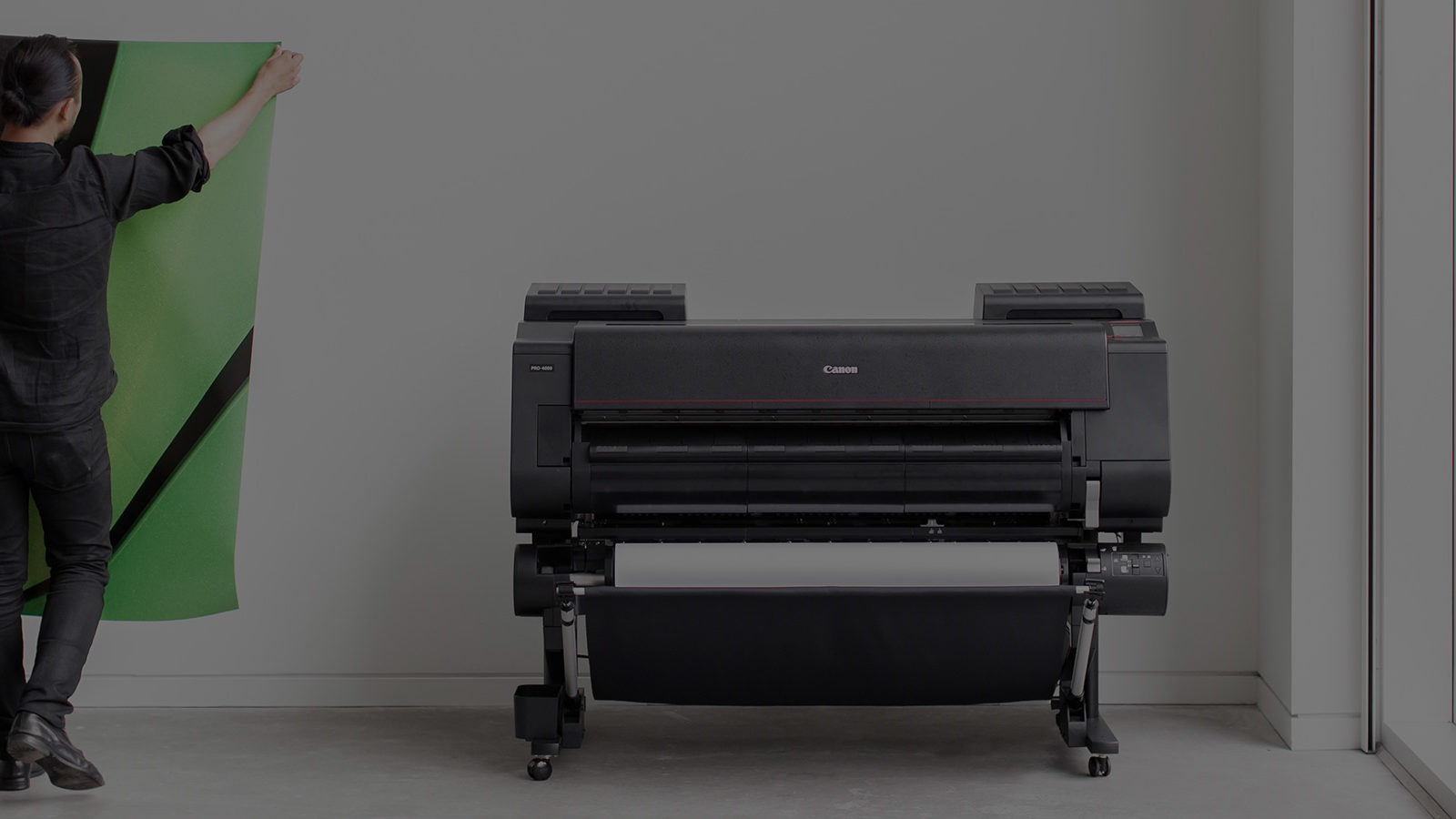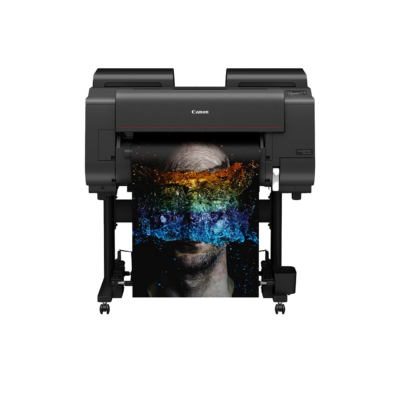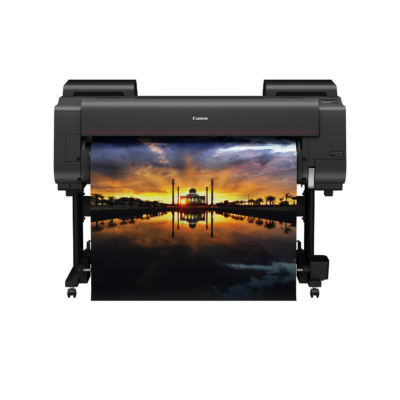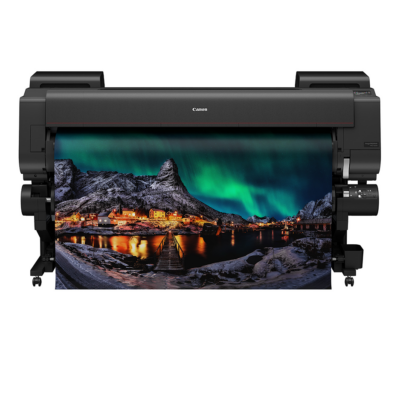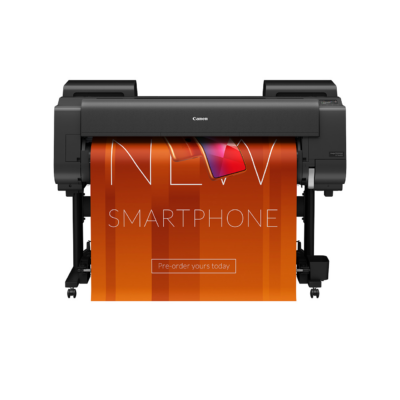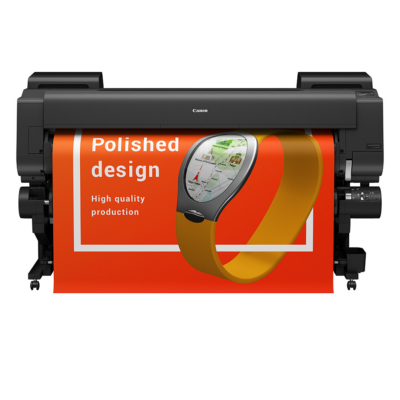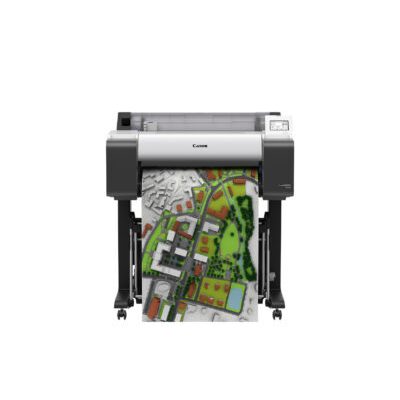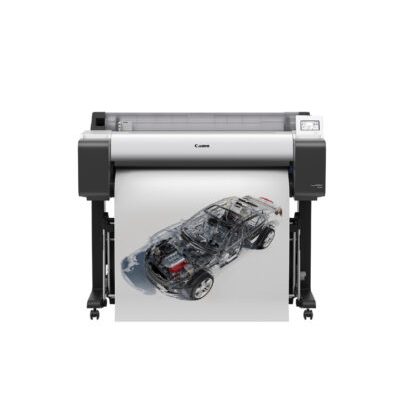Top 5 printing pain points that are slowing you down!
Did you know? Large format printing challenges can be affecting your overall productivity and disrupting your workflow. Read to find out why.
PAIN POINT #1: DE-CLOGGING
Many large format printers need to be cleaned daily as the inkjet nozzles often become clogged. The process to clear the nozzles could take up to 10 minutes which affects the overall duration of the print job.
Here’s what the de-clogging process could look like:
- Turn on printer (approx. 2-3 mins )
- Run nozzle test print (approx. 1 min)
- Review results (approx. 30 secs)
- If nozzles are clogged, run cleaning cycle (approx. 1-3 mins)
- Run nozzle check print (approx. 1 min)
- Review results (approx. 30 secs)
- If test is clean (finished)
- If test shows clogged nozzles, run cleaning cycle, repeat as needed until nozzle check comes out clean
- That’s up to a minimum 10 minutes of downtime!
Did you know? Canon technology cleans and de-clogs automatically which reduces downtime and wasted ink.
PAIN POINT #2: ON-BOARD PROCESSOR
There are many factors that can affect the print speed of a large format printer. This includes the file size, power of the computer, as well as the WIFI speed which can take up to several minutes.
Did you know? With Canon, the print job leaves the computer at up to 1 GB per second and is processed by the printer; this frees up the computer and network as soon as the job is released.
PAIN POINT #3: NOZZLE COMPENSATION
Standard large format printers have the tendency of the nozzles dropping out and clogging if the printer has been inactive for some time. If a nozzle is clogged during a print job, you’ll see lines or even the incorrect colour appearing on your print. In order to fix this issue, you would have to stop/ cancel the job, de-clog and reprint. It’s important to note that cleaning nozzles can also waste a lot of ink.
Did you know? With Canon large format printers even if the nozzles start to clog, the printer can compensate during the print triggering another nozzle to seamlessly be used in order to get the job completed. Nozzle compensation is invisible to the end-user as the printer works on demand. This doesn’t mean you don’t ever have to clean the device or nozzles, but the frequency of having to stop and de-clog is much lower.
PAIN POINT #4: INK
The process of changing ink tanks can take about a minute: remove packaging, agitate the cartridge, remove old cartridge, insert new one. The general flow of ink running out with most large format printers is like this:
- Low ink warning, printer runs out of ink
- Error message
- Job cancelled
- Printer stops until new cartridge is inserted
- Replace cartridge
- Resend cancelled job
Did you know? With Canon technology, you’ll get the low ink warning, allowing you to change the ink whenever it’s convenient whether it’s between jobs or during a print. If you change while printing, queued jobs still keep going allowing you to be more productive in your overall printing process. Canon also has sub-tanks which allow you to continue printing even if the ink tank runs out of ink during the print process.
PAIN POINT #5: FLAT-STACKING VS. CATCH BASKET
Most large format printers often have a basket that catches the paper once it’s printed. This affects the overall efficiency as the prints often have to be unrolled, flattened and put back in order.
Did you know? Canon models have a flat-stacking basket which helps prevent the prints from rolling up and instead fall flat onto a fabric tray. This saves time and energy and allows you to send multiple jobs to the printer at the same time without having to stop, remove, flatten and organize the prints.

